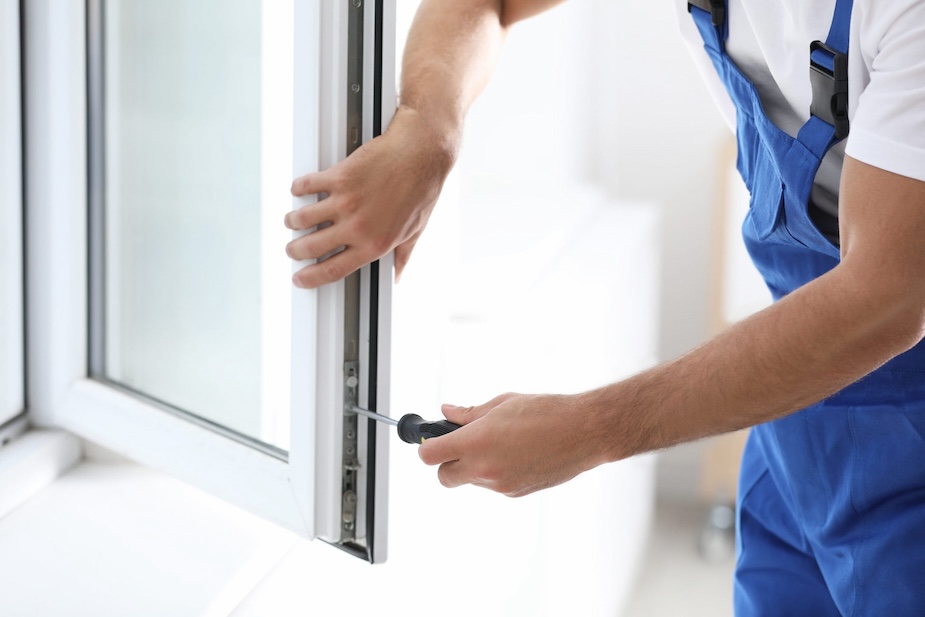The 10 Most Terrifying Things About Patio Doors Locks Replacement
페이지 정보

본문
Patio Doors Locks Replacement
 Locks for your patio doors are crucial to help protect your home. They increase security and can also help you save money on home insurance.
Locks for your patio doors are crucial to help protect your home. They increase security and can also help you save money on home insurance.
 With a few simple tools, you can replace a lock that is old or broken. Start by cleaning and lubricating the lock you have. Then, select a replacement lock with the proper screw hole size.
With a few simple tools, you can replace a lock that is old or broken. Start by cleaning and lubricating the lock you have. Then, select a replacement lock with the proper screw hole size.
Safety Precautions
When you have a sliding patio door it's a good idea to replace the lock you have with a new one. This will help keep your patio safe from burglars by ensuring that only you and your family members are allowed access. Installing a security system will not only ensure your home is more secure but will also discourage criminals. This will notify you when someone tries to gain entry into your home, allowing you to take precautions or alert the authorities.
Patio doors are located in areas that are not visible and are therefore a target for burglars who wish to look over the contents of your home without or other people noticing them. To circumvent the spring-loaded locks found on patio doors, burglars simply place their hands on the glass and move them up and down in a quick motion until the lock stops. Install a security bar on the track, which stays in place as you shut your door. There are other options like the security pin which is made by drilling a hole in the frame of the sliding door and matching it with a hole that is drilled into the stationary door, preventing the doors from being separated.
The choice of the right patio door lock isn't just about selecting the right lock, but it's about choosing the right lock for your requirements and is compatible with the style of your home. There are many lock options for patio doors that can be fitted to your upvc door locking mechanism replacement and French doors. The most important thing is to choose one that is compatible with your existing handles, and matches the aesthetics of your home.
After you have chosen the right lock for your patio door, it is important to maintain it and ensure that it operates correctly. Regular cleaning and lubrication could help keep your patio door securely locked and prevent it from jamming or sliding. Use a dry cloth to clean any dust or debris that has accumulated on the lock, and then use graphite or silicone spray to lubricate it. Avoid using oil based oils, as they may attract dirt.
Measure the Existing Lock
The first thing you should do before ordering a replacement lock is to measure accurately your current one. This will help you avoid buying a replacement lock that is the wrong size. This will ensure that the new lock fits to the hole you have already. To measure the length and diameter of the cylinder, use a tape measure and write down the measurements in millimetres. Remember to exclude the casing and any decorative elements surrounding the cylinder from the measurements. In the event that you try to guess or estimate these dimensions, it could lead to errors that may affect the security and performance of your new lock.
There are three primary types of patio door locks, each with different levels of security. A key-operated lock is the cheapest option, but it doesn't offer any protection against intruders. A central rail key-operated lock provides more security than a standard lock and can qualify you for a reduction on your insurance for your home. A multi-point locking system fitted to the central rail, where the doors meet, offers greater security than a standard key operated lock and is usually police approved.
Another alternative is a mortise lock which is the most expensive but provides high-quality, reliable security. It is typically placed in the middle of the door to keep it from being slid like the sliding glass window.
If your patio doors are fitted with holes for a deadbolt it is necessary to redrill the hole to make it larger. This can be challenging however, it's essential to do it correctly so the lock won't cause damage to the door frame.
Before drilling into your door frame, you must read the instructions that came with the lock replacement lock for composite door. This will provide you with a step-by-step guide for proper installation. It will also outline how to adjust the lock in order to make it more secure and fit better. It will also explain how to test the locks so that you are sure they work as intended. This will prevent any issues that may arise before they become more serious. If you are unable to resolve an issue with the lock, you should to contact a professional for assistance.
Clean the Lock
A door lock that's not functioning properly is among the most common issues that homeowners face. Whether it's a key that doesn't turn or a latch that won't engage or a handle which doesn't lift, patio doors that don't lock are extremely frustrating and could pose an extremely risk to security. The good thing is that it's easy to fix these issues with a little bit of troubleshooting and maintenance.
Begin by removing the lock handle from the patio door. To protect your patio door from dirt or cleaning products that could fall, you should put down a cover like an old towel or tarp. This will help with cleanup and also protect the surface of the patio door from scratches.
Then, clean the lock mechanism using warm soapy water. This is a challenging process if you've got an old lock. You'll need to take special care not to damage the delicate surface. A toothbrush can help you reach into tight spaces. A wire brush could be required to clean any dirt or debris that is difficult to remove.
Once the lock is clean and dry, it's time for lubrication of the moving parts. This will reduce stiffness and help the keyhole and latch to function smoothly. Choose a silicone-based lubricant specifically designed for use on door Replace Patio door lock locks.
Some patio door locks have pin tumblers that rotate up and down, so they can become jammed with dust or other contaminant. This issue can be fixed by inserting a pencil or a small amount lubricating spray in the lock.
Be aware that locks for outdoor doors are susceptible to damage due to rust or corrosion. Regularly lubricating the moving parts of your lock can aid in their performance over time, and reduce the need for costly repairs or replacement. The frequency at which you should Lubricate locks will be contingent upon the type of environment and climate of your area. In coastal areas, there is more salt in the air that can cause rust and other damage.
Lubricate the moving parts
The best way to keep your sliding patio door locks functioning properly is to lubricate them regularly. This helps prevent the build-up of dust and debris which can cause lock failure. You should also clean the locks and handle regularly with a cleaner to get rid of any dirt or grime that could be accumulating in the mechanism.
Lubricating your locks can be difficult since not all lubricants are created equal. Make use of silicone spray lubricant or a similar product to apply the lubricant on the lock mechanism. Make sure to choose a lubricant that doesn't attract dust or dirt. This will stop the lubricant's wear off quickly and making the lock more difficult to operate.
Another option to lubricate your patio door locks is dry graphite powder. It is easy to use and can prevent corrosion. You can purchase dry graphite grease online or at most hardware stores. It's also available in aerosol form, which makes it much easier to apply. The solvent in the lubricant quickly dries, leaving behind an unburnt layer of graphite which provides lubrication without attracting dust or other chemicals.
If you want an alternative that lasts longer then a Teflon fluid is a good choice. This kind of lubricant gives durability against corrosion and will not attract dirt or dust and is therefore more durable than other oils. It is also possible to use a deicer lubricant that is specially designed to resist cold temperatures and stop ice from forming.
After you've lubricated the locks, it's important to check them to ensure they're operating correctly. Try opening and closing the door several times, paying attention to any resistance or sticking. It's important that you fix any issues as soon as you can before they get worse.
If you're replacing patio door lock a mortise latch ensure that the new handle and spindle are compatible with the door's make and model. You'll also need to be cautious about the placement of the keyway in the mortise latch. You'll have to choose the appropriate one for your sliding patio doors. Some are horizontal, while others are at 45-degree angles.
 Locks for your patio doors are crucial to help protect your home. They increase security and can also help you save money on home insurance.
Locks for your patio doors are crucial to help protect your home. They increase security and can also help you save money on home insurance. With a few simple tools, you can replace a lock that is old or broken. Start by cleaning and lubricating the lock you have. Then, select a replacement lock with the proper screw hole size.
With a few simple tools, you can replace a lock that is old or broken. Start by cleaning and lubricating the lock you have. Then, select a replacement lock with the proper screw hole size.Safety Precautions
When you have a sliding patio door it's a good idea to replace the lock you have with a new one. This will help keep your patio safe from burglars by ensuring that only you and your family members are allowed access. Installing a security system will not only ensure your home is more secure but will also discourage criminals. This will notify you when someone tries to gain entry into your home, allowing you to take precautions or alert the authorities.
Patio doors are located in areas that are not visible and are therefore a target for burglars who wish to look over the contents of your home without or other people noticing them. To circumvent the spring-loaded locks found on patio doors, burglars simply place their hands on the glass and move them up and down in a quick motion until the lock stops. Install a security bar on the track, which stays in place as you shut your door. There are other options like the security pin which is made by drilling a hole in the frame of the sliding door and matching it with a hole that is drilled into the stationary door, preventing the doors from being separated.
The choice of the right patio door lock isn't just about selecting the right lock, but it's about choosing the right lock for your requirements and is compatible with the style of your home. There are many lock options for patio doors that can be fitted to your upvc door locking mechanism replacement and French doors. The most important thing is to choose one that is compatible with your existing handles, and matches the aesthetics of your home.
After you have chosen the right lock for your patio door, it is important to maintain it and ensure that it operates correctly. Regular cleaning and lubrication could help keep your patio door securely locked and prevent it from jamming or sliding. Use a dry cloth to clean any dust or debris that has accumulated on the lock, and then use graphite or silicone spray to lubricate it. Avoid using oil based oils, as they may attract dirt.
Measure the Existing Lock
The first thing you should do before ordering a replacement lock is to measure accurately your current one. This will help you avoid buying a replacement lock that is the wrong size. This will ensure that the new lock fits to the hole you have already. To measure the length and diameter of the cylinder, use a tape measure and write down the measurements in millimetres. Remember to exclude the casing and any decorative elements surrounding the cylinder from the measurements. In the event that you try to guess or estimate these dimensions, it could lead to errors that may affect the security and performance of your new lock.
There are three primary types of patio door locks, each with different levels of security. A key-operated lock is the cheapest option, but it doesn't offer any protection against intruders. A central rail key-operated lock provides more security than a standard lock and can qualify you for a reduction on your insurance for your home. A multi-point locking system fitted to the central rail, where the doors meet, offers greater security than a standard key operated lock and is usually police approved.
Another alternative is a mortise lock which is the most expensive but provides high-quality, reliable security. It is typically placed in the middle of the door to keep it from being slid like the sliding glass window.
If your patio doors are fitted with holes for a deadbolt it is necessary to redrill the hole to make it larger. This can be challenging however, it's essential to do it correctly so the lock won't cause damage to the door frame.
Before drilling into your door frame, you must read the instructions that came with the lock replacement lock for composite door. This will provide you with a step-by-step guide for proper installation. It will also outline how to adjust the lock in order to make it more secure and fit better. It will also explain how to test the locks so that you are sure they work as intended. This will prevent any issues that may arise before they become more serious. If you are unable to resolve an issue with the lock, you should to contact a professional for assistance.
Clean the Lock
A door lock that's not functioning properly is among the most common issues that homeowners face. Whether it's a key that doesn't turn or a latch that won't engage or a handle which doesn't lift, patio doors that don't lock are extremely frustrating and could pose an extremely risk to security. The good thing is that it's easy to fix these issues with a little bit of troubleshooting and maintenance.
Begin by removing the lock handle from the patio door. To protect your patio door from dirt or cleaning products that could fall, you should put down a cover like an old towel or tarp. This will help with cleanup and also protect the surface of the patio door from scratches.
Then, clean the lock mechanism using warm soapy water. This is a challenging process if you've got an old lock. You'll need to take special care not to damage the delicate surface. A toothbrush can help you reach into tight spaces. A wire brush could be required to clean any dirt or debris that is difficult to remove.
Once the lock is clean and dry, it's time for lubrication of the moving parts. This will reduce stiffness and help the keyhole and latch to function smoothly. Choose a silicone-based lubricant specifically designed for use on door Replace Patio door lock locks.
Some patio door locks have pin tumblers that rotate up and down, so they can become jammed with dust or other contaminant. This issue can be fixed by inserting a pencil or a small amount lubricating spray in the lock.
Be aware that locks for outdoor doors are susceptible to damage due to rust or corrosion. Regularly lubricating the moving parts of your lock can aid in their performance over time, and reduce the need for costly repairs or replacement. The frequency at which you should Lubricate locks will be contingent upon the type of environment and climate of your area. In coastal areas, there is more salt in the air that can cause rust and other damage.
Lubricate the moving parts
The best way to keep your sliding patio door locks functioning properly is to lubricate them regularly. This helps prevent the build-up of dust and debris which can cause lock failure. You should also clean the locks and handle regularly with a cleaner to get rid of any dirt or grime that could be accumulating in the mechanism.
Lubricating your locks can be difficult since not all lubricants are created equal. Make use of silicone spray lubricant or a similar product to apply the lubricant on the lock mechanism. Make sure to choose a lubricant that doesn't attract dust or dirt. This will stop the lubricant's wear off quickly and making the lock more difficult to operate.
Another option to lubricate your patio door locks is dry graphite powder. It is easy to use and can prevent corrosion. You can purchase dry graphite grease online or at most hardware stores. It's also available in aerosol form, which makes it much easier to apply. The solvent in the lubricant quickly dries, leaving behind an unburnt layer of graphite which provides lubrication without attracting dust or other chemicals.
If you want an alternative that lasts longer then a Teflon fluid is a good choice. This kind of lubricant gives durability against corrosion and will not attract dirt or dust and is therefore more durable than other oils. It is also possible to use a deicer lubricant that is specially designed to resist cold temperatures and stop ice from forming.
After you've lubricated the locks, it's important to check them to ensure they're operating correctly. Try opening and closing the door several times, paying attention to any resistance or sticking. It's important that you fix any issues as soon as you can before they get worse.
If you're replacing patio door lock a mortise latch ensure that the new handle and spindle are compatible with the door's make and model. You'll also need to be cautious about the placement of the keyway in the mortise latch. You'll have to choose the appropriate one for your sliding patio doors. Some are horizontal, while others are at 45-degree angles.
- 이전글Buy Marta Mini Yorkshire Terrier: 10 Things I'd Like To Have Known Earlier 25.04.05
- 다음글Ten Taboos About Buy Eu Driving License Experiences You Shouldn't Post On Twitter 25.04.05
댓글목록
등록된 댓글이 없습니다.



 02.6010.5010
02.6010.5010




